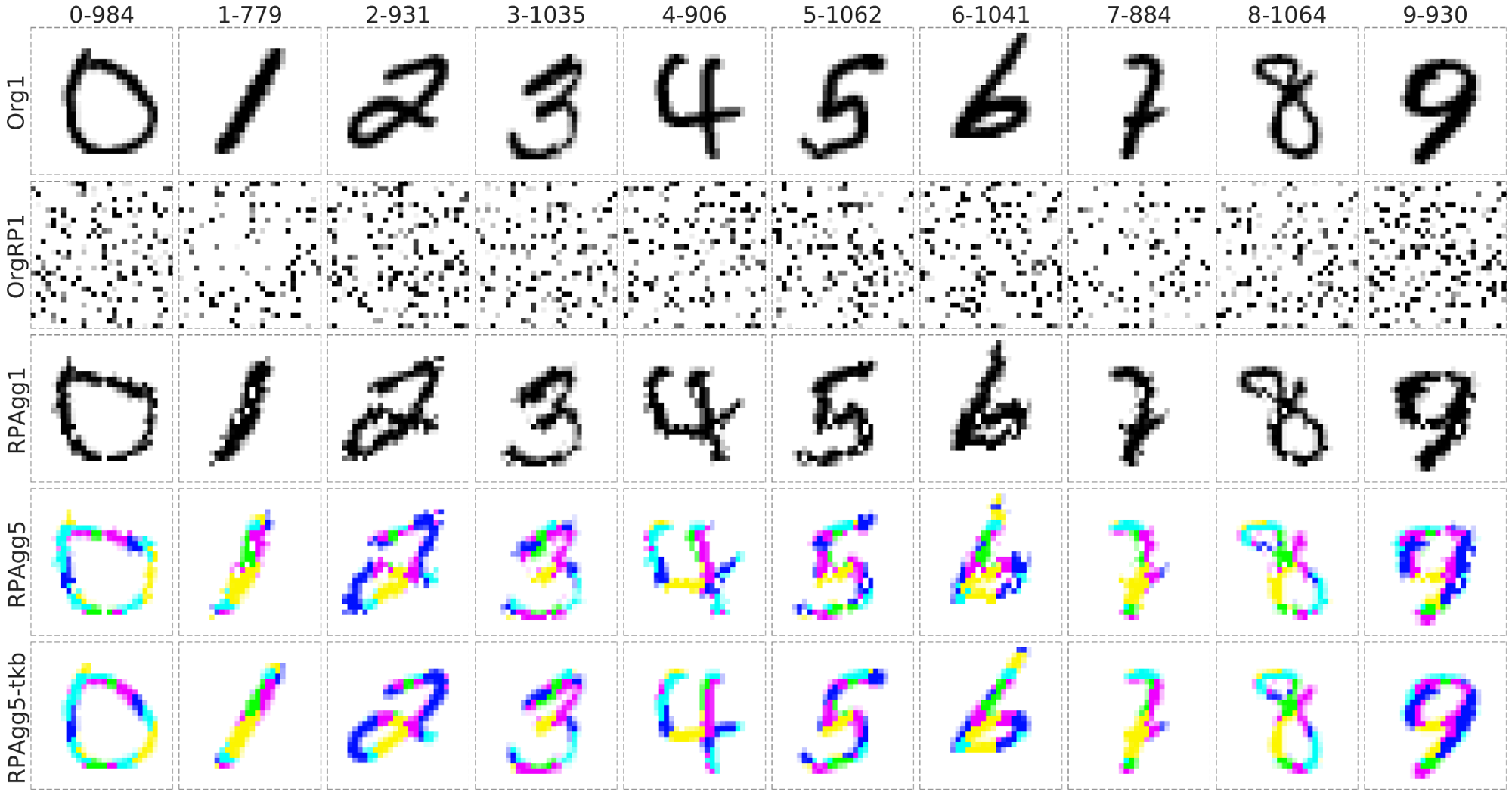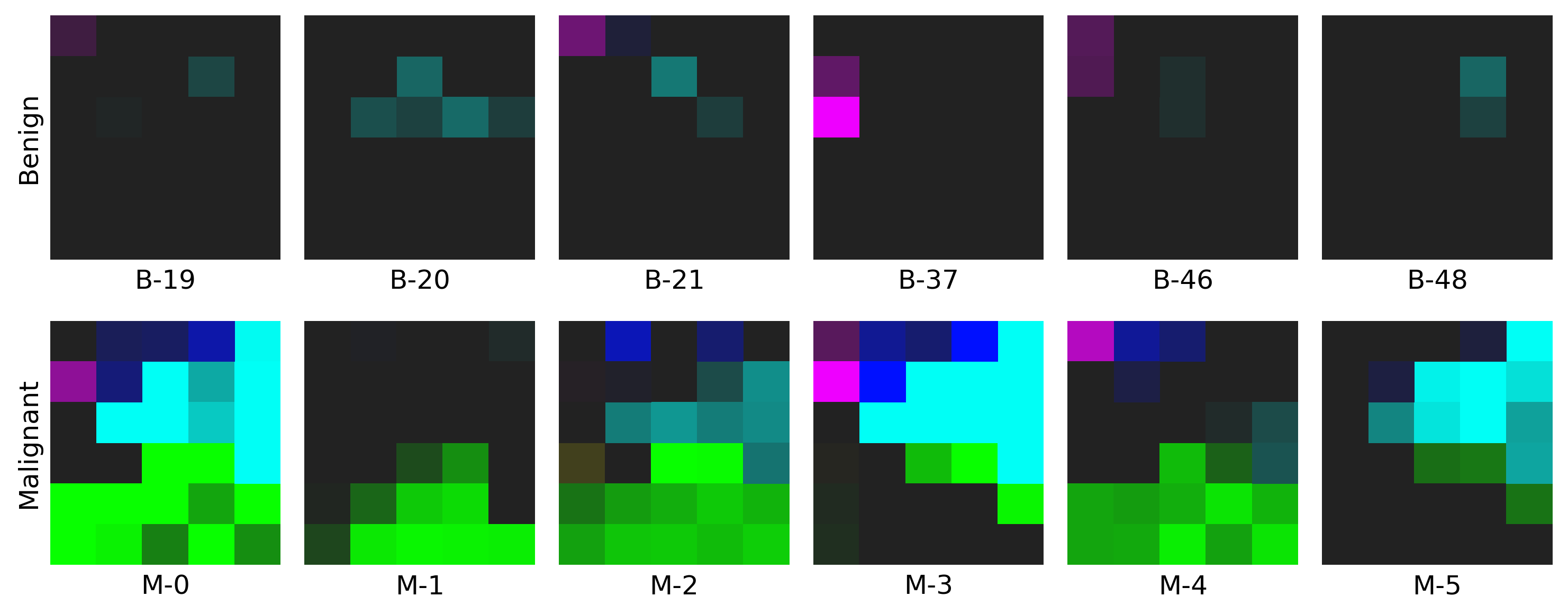Downloads: 1
Switch to side-by-side view
--- a/README.md +++ b/README.md @@ -1,124 +1,124 @@ -[](https://github.com/shenwanxiang/bidd-aggmap/tree/master/paper/example) -[](https://bidd-aggmap.readthedocs.io/en/latest/?badge=latest) -[](https://pepy.tech/project/aggmap) -[](https://badge.fury.io/py/aggmap) -[](https://academic.oup.com/nar/article/50/8/e45/6517966?login=false) - - -<img src="./docs/images/logo.png" align="left" height="170" width="130" > - - - -# Jigsaw-like AggMap - -## A Robust and Explainable Omics Deep Learning Tool - ----- - - -### Installation (Only on Linux system) - -install aggmap by: -```bash -# create an aggmap env -conda create -n aggmap python=3.8 -conda activate aggmap -pip install --upgrade pip -pip install aggmap==1.2.1 -``` - ----- - -### Usage - -```python -import pandas as pd -from sklearn.datasets import load_breast_cancer -from aggmap import AggMap, AggMapNet - -# Data loading -data = load_breast_cancer() -dfx = pd.DataFrame(data.data, columns=data.feature_names) -dfy = pd.get_dummies(pd.Series(data.target)) - -# AggMap object definition, fitting, and saving -mp = AggMap(dfx, metric = 'correlation') -mp.fit(cluster_channels=5, emb_method = 'umap', verbose=0) -mp.save('agg.mp') - -# AggMap visulizations: Hierarchical tree, embeddng scatter and grid -mp.plot_tree() -mp.plot_scatter(enabled_data_labels=True, radius=5) -mp.plot_grid(enabled_data_labels=True) - -# Transoformation of 1d vectors to 3D Fmaps (-1, w, h, c) by AggMap -X = mp.batch_transform(dfx.values, n_jobs=4, scale_method = 'minmax') -y = dfy.values - -# AggMapNet training, validation, early stopping, and saving -clf = AggMapNet.MultiClassEstimator(epochs=50, gpuid=0) -clf.fit(X, y, X_valid=None, y_valid=None) -clf.save_model('agg.model') - -# Model explaination by simply-explainer: global, local -simp_explainer = AggMapNet.simply_explainer(clf, mp) -global_simp_importance = simp_explainer.global_explain(clf.X_, clf.y_) -local_simp_importance = simp_explainer.local_explain(clf.X_[[0]], clf.y_[[0]]) - -# Model explaination by shapley-explainer: global, local -shap_explainer = AggMapNet.shapley_explainer(clf, mp) -global_shap_importance = shap_explainer.global_explain(clf.X_) -local_shap_importance = shap_explainer.local_explain(clf.X_[[0]]) -``` - - -### How It Works? - -- AggMap flowchart of feature mapping and agglomeration into ordered (spatially correlated) multi-channel feature maps (Fmaps) - - -**a**, AggMap flowchart of feature mapping and aggregation into ordered (spatially-correlated) channel-split feature maps (Fmaps).**b**, CNN-based AggMapNet architecture for Fmaps learning. **c**, proof-of-concept illustration of AggMap restructuring of unordered data (randomized MNIST) into clustered channel-split Fmaps (reconstructed MNIST) for CNN-based learning and important feature analysis. **d**, typical biomedical applications of AggMap in restructuring omics data into channel-split Fmaps for multi-channel CNN-based diagnosis and biomarker discovery (explanation `saliency-map` of important features). - - ----- -### Proof-of-Concepts of reconstruction ability on MNIST Dataset - -<video width="320" height="240" controls> - <source src="https://www.shenwx.com/files/Video_MNIST.mp4" type="video/mp4"> -</video> - -- It can reconstruct to the original image from completely randomly permuted (disrupted) MNIST data: - - - - - -`Org1`: the original grayscale images (channel = 1), `OrgRP1`: the randomized images of Org1 (channel = 1), `RPAgg1, 5`: the reconstructed images of `OrgPR1` by AggMap feature restructuring (channel = 1, 5 respectively, each color represents features of one channel). `RPAgg5-tkb`: the original images with the pixels divided into 5 groups according to the 5-channels of `RPAgg5` and colored in the same way as `RPAgg5`. - - ----- - - - -### The effect of the number of channels on model performance - -- Multi-channel Fmaps can boost the model performance notably: - - -The performance of AggMapNet using different number of channels on the `TCGA-T (a)` and `COV-D (b)`. For `TCGA-T`, ten-fold cross validation average performance, for `COV-D`, a fivefold cross validation was performed and repeat 5 rounds using different random seeds (total 25 training times), their average performances of the validation set were reported. ----- - - -### Example for Restructured Fmaps -- The example on WDBC dataset: click [here](https://github.com/shenwanxiang/bidd-aggmap/blob/master/paper/example/00_breast_cancer/00_WDBC_example_flow.ipynb) to find out more! - - ----- - - - -### Citation -Shen, Wan Xiang, et al. "AggMapNet: enhanced and explainable low-sample omics deep learning with feature-aggregated multi-channel networks." Nucleic Acids Research 50.8 (2022): e45-e45. - ----- - +[](https://github.com/shenwanxiang/bidd-aggmap/tree/master/paper/example) +[](https://bidd-aggmap.readthedocs.io/en/latest/?badge=latest) +[](https://pepy.tech/project/aggmap) +[](https://badge.fury.io/py/aggmap) +[](https://academic.oup.com/nar/article/50/8/e45/6517966?login=false) + + +<img src="https://raw.githubusercontent.com/shenwanxiang/bidd-aggmap/master/docs/images/logo.png" align="left" height="170" width="130" > + + + +# Jigsaw-like AggMap + +## A Robust and Explainable Omics Deep Learning Tool + +---- + + +### Installation (Only on Linux system) + +install aggmap by: +```bash +# create an aggmap env +conda create -n aggmap python=3.8 +conda activate aggmap +pip install --upgrade pip +pip install aggmap==1.2.1 +``` + +---- + +### Usage + +```python +import pandas as pd +from sklearn.datasets import load_breast_cancer +from aggmap import AggMap, AggMapNet + +# Data loading +data = load_breast_cancer() +dfx = pd.DataFrame(data.data, columns=data.feature_names) +dfy = pd.get_dummies(pd.Series(data.target)) + +# AggMap object definition, fitting, and saving +mp = AggMap(dfx, metric = 'correlation') +mp.fit(cluster_channels=5, emb_method = 'umap', verbose=0) +mp.save('agg.mp') + +# AggMap visulizations: Hierarchical tree, embeddng scatter and grid +mp.plot_tree() +mp.plot_scatter(enabled_data_labels=True, radius=5) +mp.plot_grid(enabled_data_labels=True) + +# Transoformation of 1d vectors to 3D Fmaps (-1, w, h, c) by AggMap +X = mp.batch_transform(dfx.values, n_jobs=4, scale_method = 'minmax') +y = dfy.values + +# AggMapNet training, validation, early stopping, and saving +clf = AggMapNet.MultiClassEstimator(epochs=50, gpuid=0) +clf.fit(X, y, X_valid=None, y_valid=None) +clf.save_model('agg.model') + +# Model explaination by simply-explainer: global, local +simp_explainer = AggMapNet.simply_explainer(clf, mp) +global_simp_importance = simp_explainer.global_explain(clf.X_, clf.y_) +local_simp_importance = simp_explainer.local_explain(clf.X_[[0]], clf.y_[[0]]) + +# Model explaination by shapley-explainer: global, local +shap_explainer = AggMapNet.shapley_explainer(clf, mp) +global_shap_importance = shap_explainer.global_explain(clf.X_) +local_shap_importance = shap_explainer.local_explain(clf.X_[[0]]) +``` + + +### How It Works? + +- AggMap flowchart of feature mapping and agglomeration into ordered (spatially correlated) multi-channel feature maps (Fmaps) + + +**a**, AggMap flowchart of feature mapping and aggregation into ordered (spatially-correlated) channel-split feature maps (Fmaps).**b**, CNN-based AggMapNet architecture for Fmaps learning. **c**, proof-of-concept illustration of AggMap restructuring of unordered data (randomized MNIST) into clustered channel-split Fmaps (reconstructed MNIST) for CNN-based learning and important feature analysis. **d**, typical biomedical applications of AggMap in restructuring omics data into channel-split Fmaps for multi-channel CNN-based diagnosis and biomarker discovery (explanation `saliency-map` of important features). + + +---- +### Proof-of-Concepts of reconstruction ability on MNIST Dataset + +<video width="320" height="240" controls> + <source src="https://www.shenwx.com/files/Video_MNIST.mp4" type="video/mp4"> +</video> + +- It can reconstruct to the original image from completely randomly permuted (disrupted) MNIST data: + + + + + +`Org1`: the original grayscale images (channel = 1), `OrgRP1`: the randomized images of Org1 (channel = 1), `RPAgg1, 5`: the reconstructed images of `OrgPR1` by AggMap feature restructuring (channel = 1, 5 respectively, each color represents features of one channel). `RPAgg5-tkb`: the original images with the pixels divided into 5 groups according to the 5-channels of `RPAgg5` and colored in the same way as `RPAgg5`. + + +---- + + + +### The effect of the number of channels on model performance + +- Multi-channel Fmaps can boost the model performance notably: + + +The performance of AggMapNet using different number of channels on the `TCGA-T (a)` and `COV-D (b)`. For `TCGA-T`, ten-fold cross validation average performance, for `COV-D`, a fivefold cross validation was performed and repeat 5 rounds using different random seeds (total 25 training times), their average performances of the validation set were reported. +---- + + +### Example for Restructured Fmaps +- The example on WDBC dataset: click [here](https://github.com/shenwanxiang/bidd-aggmap/blob/master/paper/example/00_breast_cancer/00_WDBC_example_flow.ipynb) to find out more! + + +---- + + + +### Citation +Shen, Wan Xiang, et al. "AggMapNet: enhanced and explainable low-sample omics deep learning with feature-aggregated multi-channel networks." Nucleic Acids Research 50.8 (2022): e45-e45. + +---- +

 Datasets
Datasets
 Models
Models